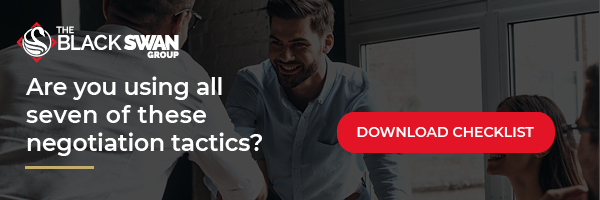 In a Q & A session I did for the internet based forum Quora: I answered the question “What’s the worst mistake you can make in salary negotiations?” with this answer: “Simply saying “yes” or “I accept” to an offer.
In a Q & A session I did for the internet based forum Quora: I answered the question “What’s the worst mistake you can make in salary negotiations?” with this answer: “Simply saying “yes” or “I accept” to an offer.
There are 3 great ways to deal with this and here’s why: (And this doesn’t only apply to salary negotiations!)
A CEO friend of mine told me he’s actually disappointed when a prospective employee simply accepts the offer. He wants to see a counter-offer, or a good question about the package, or nearly anything that shows the person knows how to respectfully feel out the situation. He wants you to demonstrate savvy.
He believes everybody he hires is both an employee and an ambassador. He wants people who listen well, who are respectful, and who can also advance his (my CEO friend’s) interests. He wants to see someone who can gently test out a salary/job offer respectfully without being challenging or having it pulled it off the table.
You do this one of 3 ways: A mirror, “Annnnd?”, or a label.
A Mirror
Your 1st “go-to” move can always be mirroring. Repeating the last 1-3 words, or a selected 1-3 words with an upward inflection so it sounds like a question. Then go silent – an effective pause.
Here’s a great example of a good friend – Eric – mirroring me when I was teaching him the skill and I didn’t realize he just did it.
Mirroring is neither acceptance or rejection. What it really is, is respectful clarification. If you’re not allowed to clarify at least once, then I’d suggest it’s not a place you want to be.
Mirrors cause them to go on and expand. My son Brandon has always called mirrors “connectors” because they help the speaker connect thoughts and keep talking. (He’s loved that he’s been able to do this to me for years and there’s a great story in my book “Never Split The Difference” in the beginning of Chapter 9 on page 191 where one of our former employees – Keenon – mirrored the heck out of me until Brandon couldn’t take it anymore.)
Annnd...?
Now another great way to both take advantage of this “connector” concept is the use of “Annnd…?” (which is an idea we share with The Jim Camp Group – whom many of you know we’ve done some collaborative training events with).
One of the most fun illustrations of this idea is in this Coke Zero commercial:
If in the highly unusual instance that your mirror is met with silence (a possible response from an Analyst) your follow-on move after your effective pause is “Annnnd…?"
Labels
Finally, the 3rd way to explore the space between offer and acceptance – the space between “yes” and “no” is labels.
“It seems like…” “It sounds like…” “It looks like…” (Followed by an effective pause.)
It’s critical to not “step” on your label by following it with a question or some sort of an explanation. You’ve got to let them sink in.
“It seems like there’s some flexibility in this package?”
“It sounds like there’s more here?”
“It seems like you have some ranges in mind?”
“It looks like you’ve used certain criteria to come up with this offer?”
Labels are a great way to gather more information and to test positions. They do it in a way that doesn’t make people feel backed into a corner. They’re effective in place of questions where basically you’d normally be looking for just a “yes” or a “no” and they always get more information. They open up dialog in a really gentle, yet quietly firm way.
Salary negotiations are particularly important because as I’ve said before, people are testing you as both a co-worker and an ambassador. They really don’t want you to be a push-over and they don’t want you to be a jerk. Salary negotiations shouldn’t be limited to just salary. Salary pays your mortgage but terms build your career.
“It seems like there’s a bigger picture here for this position?”
“It looks like your company has a future vision I fit into.”
“It seems like this position fits a broader need within the company.”
“It looks like there’s some built in opportunities for professional development?”
“It looks like this position fits a critical need.”
These labels can also be expressed as statements or questions (upward inflection – question; downward inflection – statement).
Employers appreciate someone with insight who “gets it”. Labels are a great way to demonstrate competence and insight. Both of these are characteristics that either merit a higher offer now, or position you for one down the line.
Please remember, plan for your success with good terms within the overall package that build your career. Labels help you flesh that out and build the success of both your career and your employer!

